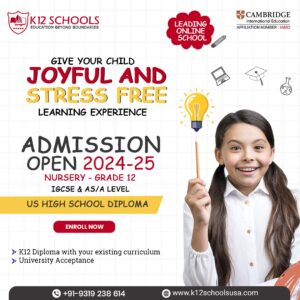The Role of Technology in Enhancing Classroom Learning for K12 Learners
Technology has ingrained itself into our daily lives in the fast-paced digital world of today, revolutionizing a wide range of sectors, including education. Technology is enriching classroom learning experiences in K12 Schools in a revolutionary way. Technology is enabling instructors and students to explore new horizons in education through interactive tools and online resources. We will examine the importance of technology in K12 classrooms and the advantages it offers students in this blog article.
Access to a World of Information: Thanks to technology, students in grades K12 have a wealth of information and instructional materials at their fingertips. Students explore virtual libraries, conduct research, and delve into topics outside the scope of conventional textbooks thanks to internet connectivity and devices. Their access to a wealth of knowledge broadens their horizons, stimulates their curiosity, and promotes self-directed learning.
Technology enables personalised learning: experiences that are catered to the requirements and learning styles of specific K12 students. In order to provide focused content and adaptive feedback, adaptive learning platforms and educational software can identify students’ strengths and shortcomings. This individualised method aids pupils in better conceptual understanding, which raises their self-esteem and academic success.
Learning that is Interactive and Engaging: Using technology in K12 Schools make learning experiences Interactive and Engaging. Students may visualise complex topics using multimedia presentations, instructional apps, simulations, and virtual reality (VR) tools, which makes learning more engaging and pleasant. Lessons become interactive challenges with the use of gamification components and educational games, which increases student engagement and motivation.
cooperation and communication: K12 students, teachers, and technology all benefit from seamless cooperation and communication. Students communicate with classmates outside of the classroom using online platforms, discussion boards, and video conferencing technologies to work on group projects, share ideas, and cooperate. Teamwork, critical thinking, and effective communication are fostered, which are essential for the workforce of the future.
Real-World Connections: K12 Schools close the knowledge gap between the classroom and real-world applications by utilising technology. Students engage with professionals in a variety of fields through virtual field tours, expert video conferences, and online collaborations, learning the relevance of their studies and obtaining practical insights. This foster increased learning appreciation and promotes career exploration.
Enhancing Accessibility and Inclusion: Technology is essential for ensuring that all K12 students have fair access to education. Students with various learning requirements are supported by assistive technologies like text-to-speech software, screen readers, and speech recognition programmes. Technology also makes remote learning opportunities possible, supporting students in difficult situations or those who need adaptable learning environments.
Conclusion: The use of technology in K12 schools has completely changed how students learn and interact with academic material. It has created fresh opportunities for individualized, interactive, and group learning experiences. K12 Schools give students the fundamentals of computing, get them ready for the digital age, and stoke their love of learning for life by utilizing technology efficiently. To realize the full potential of K12 students in the contemporary world, education must embrace the role that technology plays in the classroom.


